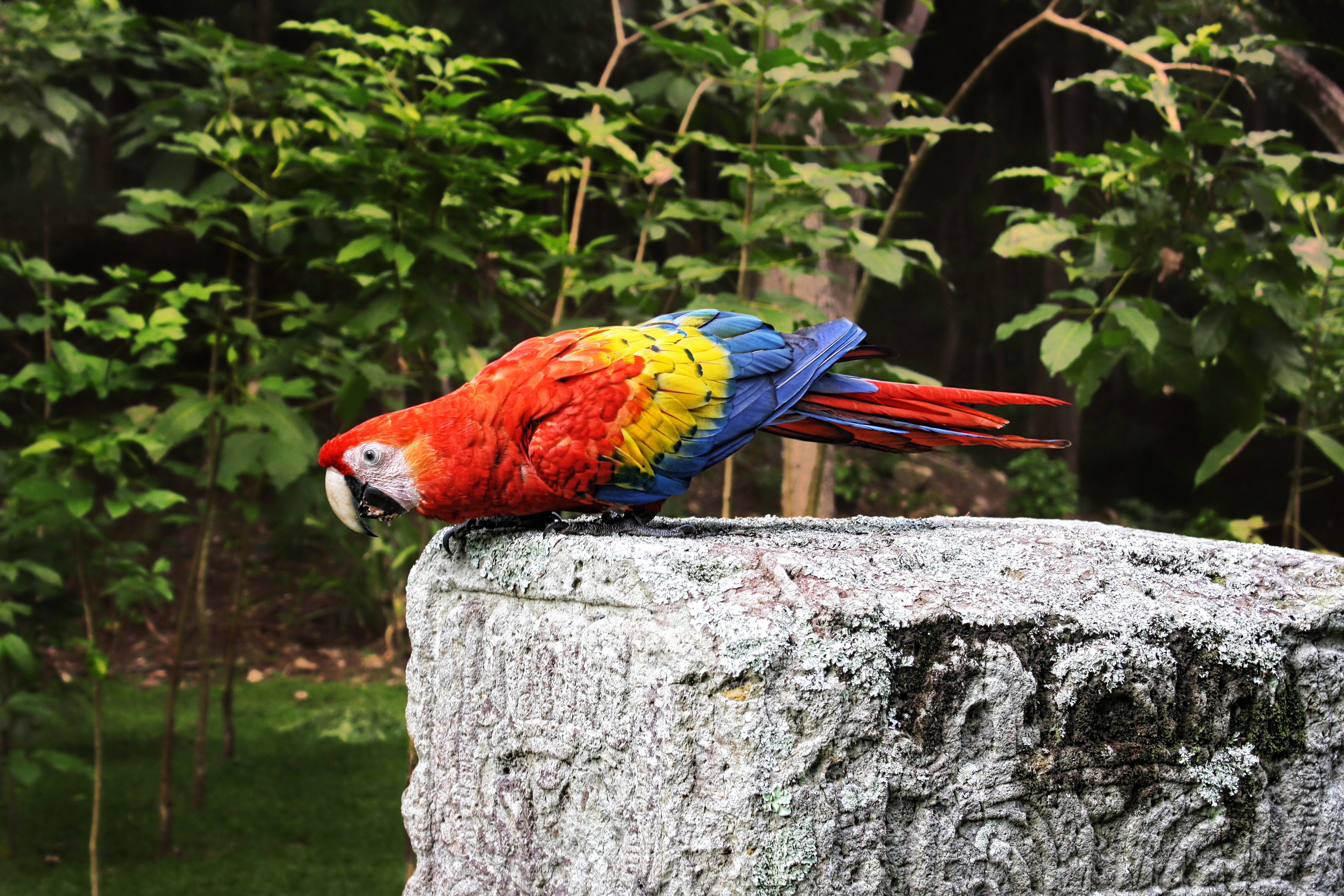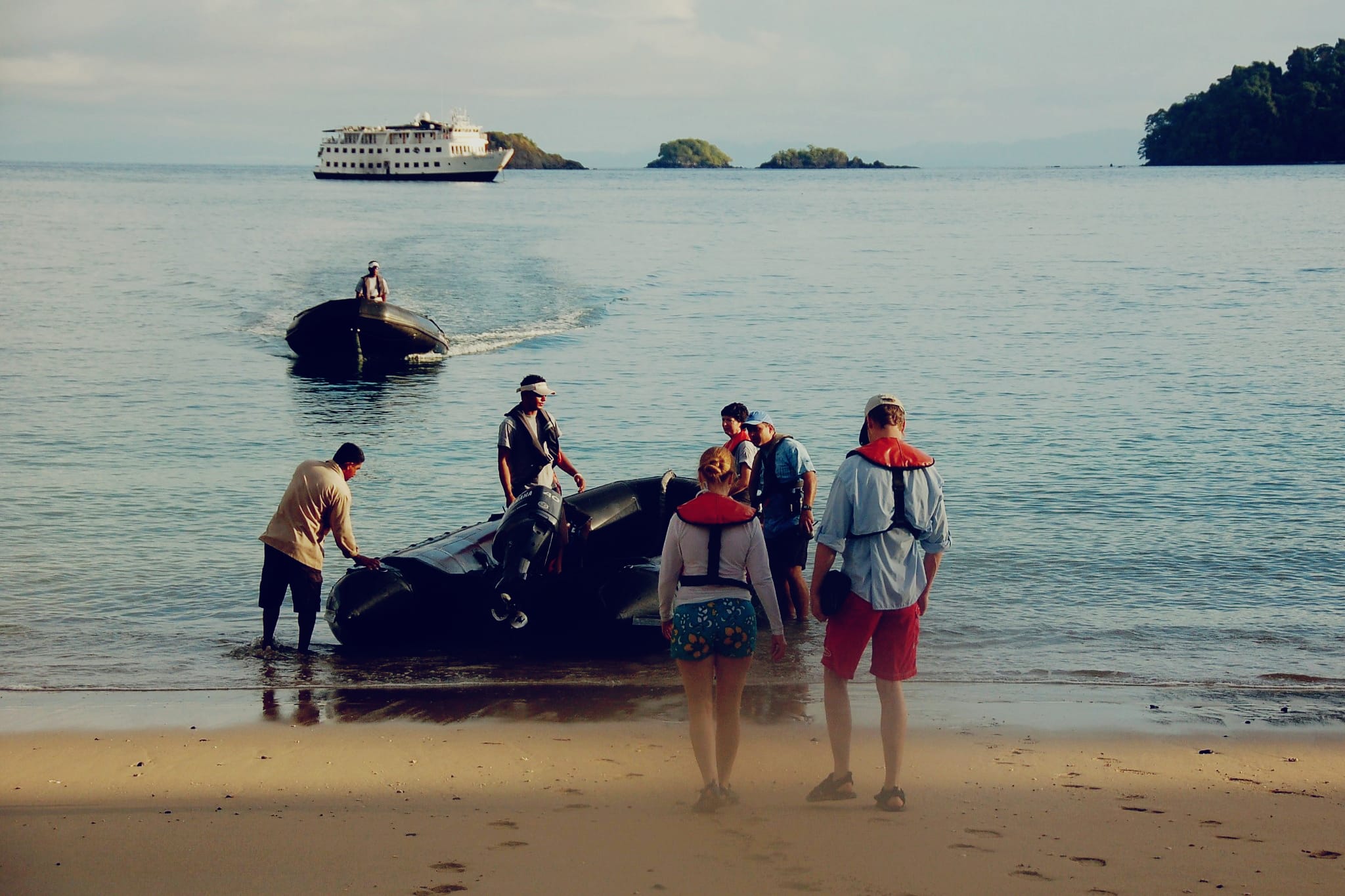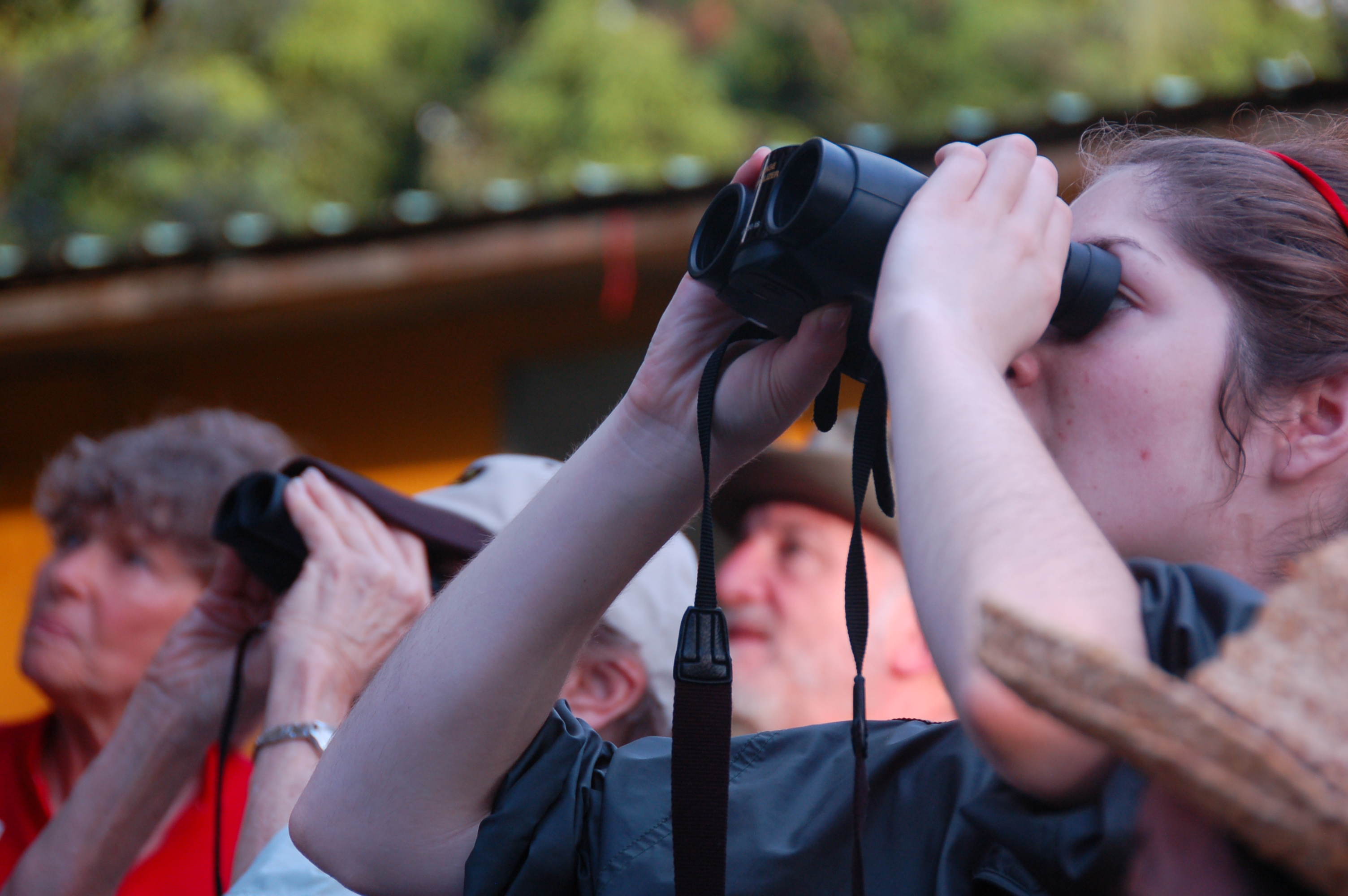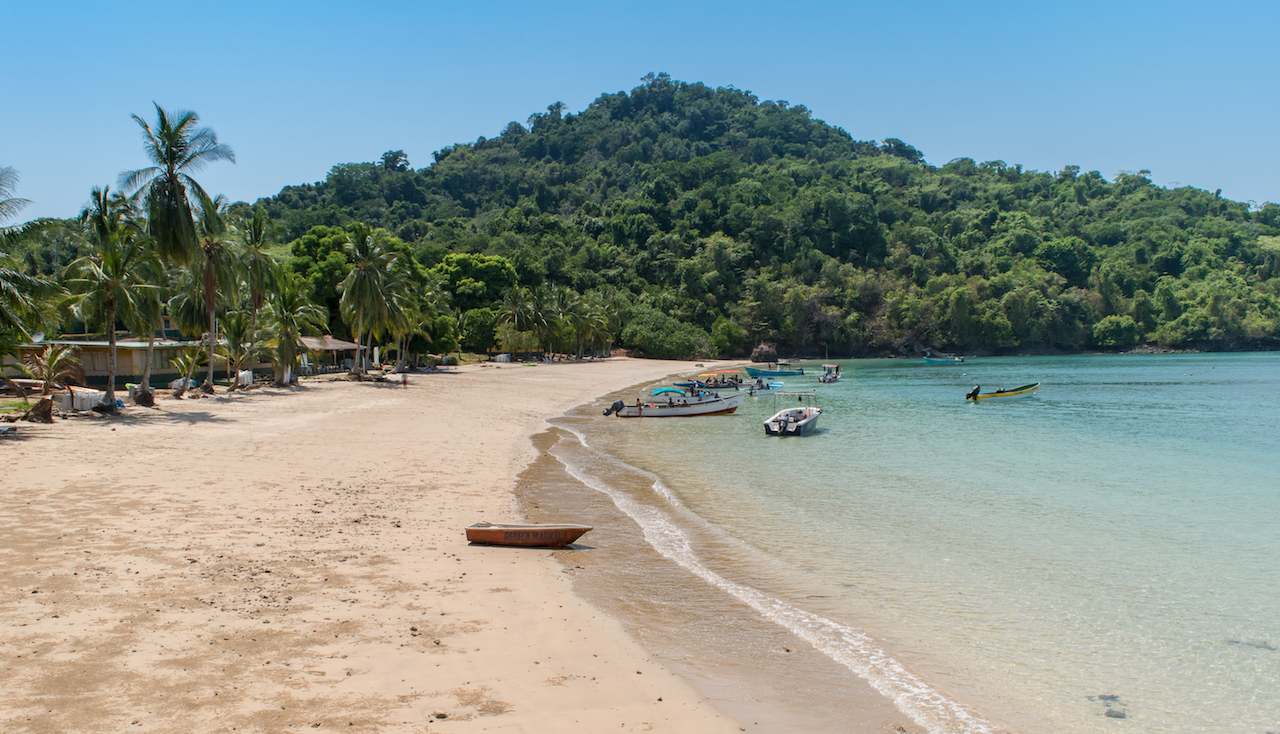06-12-2019
Capital interests threaten the National Park of Coiba
Marta Salvador | Alba SudEven being one of the richest natural parks in terms of biodiversity at a global level, the preservation of the National Park of Coiba, Panama, has been threatened in recent years. This is due to the determination of the Panamanian government to promote tourism on the island.

Crédito Fotografía: Bienvenida al Parque Nacional de Coiba. Fuente: Laszlo IIves, bajo licencia creative commons.
The National Park of Coiba is located in the Island of Coiba, the biggest one in the Centre American Pacific, as it has a total of 493 square kilometers and it includes 38 other smaller islands. Although being used as a penitentiary centre by the Panamanian authorities between 1919 and 2004, the Park was created in 1991 and nowadays constitutes one of the natural jewels of the country. Moreover, on the 14th of July, 2005 it was declared World Heritage Site by UNESCO due to its huge biodiversity (36 species of mammals, 39 amphibians and 147 birds). The extension of the park is 270.000 hectares, of which 216.000 are marine and it contains one of the biggest coral ecosystems of the world. For this reason, the UNESCO stablished a protection area where fishing is prohibited (UNESCO, 2019).
However, the management of the Park has not been exempted from conflicts. In 2014 a group of experts from UNESCO and the International Union for Conservation of Nature (UICN) visited the island and denounced, together with environmental entities, problems such as deforestation, the lack of maintenance or the loss of endemic fauna. Despite all these alerts, the Panamanian government decided to boost green tourism in the region, which produced changes in the Public Use Plan (PUP), such as the proposal of rehabilitating an ancient landing strip in order to receive a greater number of visitors. The government’s approach was seen with suspicion by UNESCO, which asked for explanations but, above all, for civil society and various environmental groups that demanded to stop the works. So, they argued that the construction of infrastructures such as hotels in the middle of a natural and protected place would begin. In addition, civil society alleged that at no time had been consulted in the planning process. Last June, the Supreme Court provisionally suspended the power of the Ministry of the Environment to manage the funds of the National Park, waiting to finally resolve a second lawsuit brought by environmental lawyers by adducing bad practices and a fraudulent process of adjudication of work. Due to its importance, we detail the origin and phases of this conflict, as well as the different actors involved.
Coiba, from World Heritage Site to a touristified National Park
Since the Natural Park was declared a World Heritage Site, it must meet a large number of requirements that entail visits and reports in order to ensure the good conditions of the area. This was what a group of experts from UNESCO and IUCN did in 2014 when they visited the island to study the situation in the protected area and help the State and local people in neighbouring areas in biodiversity conservation programs. As the journal El Universo (2014) explains, the administrator of the Panamanian National Authority of the Environment (ANAM), Silvano Vergara, stated that two of the existing problems were illegal fishing and the herd that roamed without supervision in the area. Representatives of the Center for Environmental Incidence of Panama (CIAM) also mentioned, as announced in the newspaper La Prensa (2014),that one of the problems is the deforestation of the island, which should be protected especially, since it is one of the last places in Panama where there are red macaws, a kind of bird of the family of the parrots. Another communication media, La Crítica (2014) covered this news, explaining that Fanny Douvere, a UNESCO representative, confirmed that these assessments have been continued, as a follow-up to UNESCO to check the state of the Park.
Moreover, the International Maritime University of Panama issued a study where it alarmed about the diminution of species and a high percentage of deterioration in the National Park of Coiba, while the surroundings and the biodiversity of the protected site kept marine diversity stable. He also said that, in a general way, the situation of the fish communities was in a good state, while outside the protected area this resource was reduced to 90%. In addition, the study revealed that some species such as lobster or sea cucumbers were found at very low densities, which could be due to the indiscriminate extraction they had suffered over many years.

Red-and-green macaw. Source: Daniel Mennerich, creative commons license.
Soon thereafter, in April 2015,the Panamanian government signed an initiative to boost the green tourism in the Park, which projected the provision of a basic infrastructure of 10 protected areas to welcome visitors, as informed in ANPanamá (2015). Centres for tourists, sanitary facilities, ways for the entrance of visitors, viewpoints, observation towers, marked and interpreted paths, bicycle lanes, picnic areas and camping sites, were included and some of them were built with means from the Authority of Tourism of Panama. These constructions had the intention of guaranteeing the sustainability of the tourist activity and the conservation of the environmental and cultural values of the protected areas. The vision of the green tourism development inside this area and the new changes it contemplated in the Public Use Plan (PUP) carried out at the Park tried to take full advantage of the natural and cultural attractions of the marine protected area, as well as guaranteeing its financial sustainability.
The restrictive measures of the Park provoke disagreements with touristic providers
This green tourism initiative also entailed some restrictions applied by the Ministry of the Environment (MiAmbiente), such as reducing the number of beds and spaces available, since the minimum hygiene conditions were not met and there was not enough water when all cabins were occupied. This is due to the fact that the carrying capacity of the Coiba National Park had been overcome a long time ago, but by courtesy of the Park, visitors were also attended. The Panamá América newspaper (2015) also informed that there was an interest in Coiba being scientifically exploited and being known to the world for its natural wealth, through responsible tourism. In order to do so, the participation of several entities was necessary, such as the Tourism Authority of Panamá and Sinaproc (National System of Civil Protection of the Republic of Panama).
These restrictions caused that in June 2015, a group of boteros and tour operators in the south of the districts of Montijo and Soná (Veraguas) reported that the measures implemented to enter the National Park affected the profitability of their activity. According to them, the number of available accommodations was reduced and, therefore, when tourists requested their services to make excursions to the Park, the service could not be offered due to lack of space. Other the disadvantages they faced were the increase in the price of anchorage of boats and the lodging of the boteros in the cottages, which had always been free.
In front of the ecological threat in the Park, the Coiba Fund is created two years later
In October 2017 the government of Panama announced that the National Park would be included in the tourist offer of the country respecting all the ecological aspects and without affecting the marine and coastal ecosystems. In addition, as explained in the newspaper La Estrella de Panamá (2017), the execution of new reforestation projects and the increase in the budget for the protection of the country's primary forests and all aspects in the wild areas were mentioned.
At the end of December 2017, in order to continue with the tourism strategy of the Park, the Coiba National Board of Directors approved the operation of the Coiba Fund with 3.76 million dollars. According to La Estrella de Panamá (2017), 78% of this fund, which was created through Law 44 of 2004, would be used to cover the expenses of management, protection and conservation of the Park and to finance projects of sustainable development that were adhered to the Park Management Plan. The fund also wanted to provide benefits for artisanal fishermen and small farmers, as well as for initiatives in the municipalities of Montijo, Soná, Las Palmas, Río de Jesús and Mariato, in the province of Veraguas. The Board of Directors of the Coiba National Park is the organ that manages the Natural Park and ensures its preservation. It is formed by the Ministry of the Environment and the Security, the Tourism Authority and Aquatic Resources, the National Secretariat of Science and Technology, the University of Panama, the Chamber of Commerce of the central province of Veraguas, mayors and representatives of the artisanal, sports, industrial and export fishery sectors.

Tourists and boteros on the Island of Coiba. Source: Scott Ableman, creative commons license.
Environmental entities and civil population are dissatisfied with the Plan for the Public Use of the Park
On January 3, 2018, the Board of Directors of the Coiba National Park adopted the Public Use Plan of the protected area. This planning tool had the objective of ordering the scientific, ecotourism and sustainable development activities. In this way, as explained by the media Panamá América (2018), the Council complied with the historical objective of managing the public activities of the Park and attending international commitments to UNESCO. However, the MarViva Foundation considered that the implementation of the document was not viable for its application because it still needed to comply with some relevant recommendations and adjustments. Along with other NGOs in the environmental sector, the Minister of Environment publicly asked the Secretary of the Environment to ensure the integration in the PUP of all the adjustments and recommendations received to reduce the deficiencies that persisted on the island in the short term. According to the gathered specialists, if they did not comply with the PUP and with all the recommendations given, the risk of having a poor management in Coiba ranged and of failing to fulfil the objective of conservation of the National Park and its special area of protection Marine, as well as endangering the integrity of marine ecosystems and the biodiversity of the area.
Interestingly, during the same month of January, the newspaper La Prensa (2018) launched a survey of its users asking whether the Coiba National Park should be open to tourism. The results show 58% of votes for the non and 42% for the yes, data that, despite not having been collected scientifically, shows the disagreement of the local population with the project.
UNESCO is involved to protect the National Park against the threat to its preservation
On February 16th, 2018, UNESCO sent a letter to the Republic of Panama requesting clarifications on the growing concerns related to the desire to build the Coiba airport (UNESCO, 2018). The State responded on March 14th, explaining that this planning was in the process of a public competition in order to study, design, rehabilitate and maintain the existing infrastructure, which was already foreseen in the Public Use Plan.
At the end of May 2018, UNESCO requested the suspension of the PUP of the National Park of Coiba, asking to evaluate the possible negative impacts of the plan taking into account the exceptional universal value of Coiba, as reported in the newspaper La Prensa de Panamá (2018). The evaluation had to be based on rigorous scientific data and completed and presented on February 1, 2019, for the review of the World Heritage Centre of the International Union for the Conservation of Nature (UICN). The international body also requested to ensure that the Environmental Impact Study for the airport infrastructure project was prepared following the recommendations on studies of environmental assessments of UICN, and presented on December 1, 2019, for its review before the project works begin.
UNESCO requested the establishment of a program to monitor the impact of tourism on the protected area and inform of the development of any program or plan related to tourism in the future. In this way, UNESCO joined the concerns of the Scientific Committee of the Coiba National Park and conservation groups, such as MarViva, who reported that the Public Use Plan had been approved without taking into account the scientific information generated in the last twenty years. UNESCO also expressed concerns about fishing regulations considering that they did not guarantee long-term preservation of the species. With this request, it was confirmed that civil society was right to demand the closure of the Coiba National Park to the public, as well as the modification of the internal regulations of the Board of Directors; the approval of the PUP without the previous study of carrying capacity that indicates the maximum of visitors; the permit to rehabilitate the runway to promote high impact ecotourism; the signing of a loan to finance the PUP and the adoption of fishing regulations. These demands had to be prioritized in accordance with the recommendations of the UNESCO World Heritage Committee, according to Panamá América (2018).

Tourists in the National Park of Coiba. Source: Scott Ableman, creative commons license.
The project is approved to improve the state of the airport, but the demands against it increase
According to a plan promoted by the Ministry of the Presidency, with an Environmental Impact Study approved between June 26th and 27th, 2018, it was proposed to pave the landing field for airplanes already present on the island with the purpose of using it for tourist use and official visits. The tender process for "Study, Design, Rehabilitation and Maintenance of the Landing Field of the Island Coiba, Province of Venaguas" (public act No. 2018-0-03-0-09-LV-029896), was awarded by the Ministry of the Presidency to the company Constructora Cumo, SA, with a budget of 3,270,000 dollars. The choice of this company was questioned by some irregularities, as reported by the newspaper La Estrella de Panamá (2018).
Although the Environmental Impact Study was favourable, the lawyer and president of the Environmental Law Association, Donaldo Sousa Guevara, presented two complaints against the President Juan Carlos Varela during the month of August and the Minister of Foreign Affairs, Ambiance, Emilio Sempris, for abuse of authority, overruns of functions, traffic of influences and environmental crimes to the detriment of Law 44 of the Coiba National Park. On the other hand, the same lawyer filed a lawsuit against Etmara Donoso (regional director of MiAmbiente de Veraguas) and Edilma Rodríguez (head of the Department of environmental impact assessment). The concern for this fraudulent process was shared by Flavio Méndez (Ambassador of Panama to UNESCO), the MarViva Foundation, the Environmental Incident Center (CIAM), the National Committee of the International Council of Monuments and Sites (ICOMOS) and the Inter-American Bank of Development (IDB). One of the main concerns is the fact that President Varela had not consulted the local communities, the Scientific Committee nor the Steering Committee of the island of Coiba. This project was perceived as the spearhead of a whole business possibility, such as hotels, in a place that is a World Heritage Site where its exceptional universal value could be endangered.
The government appears to defend the project, but citizen protests continue
On September 14, Emilio Sempris, Minister of the Environment, appeared in the National Assembly to answer the questions of the Chamber in reference to the increasing number of citizen requests. Among the complaints was the fact that the Study of Environmental Impact with respect to the various constructions should be Category III, as it implies a great environmental impact and Coiba is a protected area. It was also commented that business interests should not be taken into account when it comes to a World Heritage Site.
On the other hand, the inactivity of ANCON, historically one of the largest defenders of the natural protected areas of the country, surprised citizens and other environmental entities. Once it was revealed that the minister and the director of ANCON are married, the detractors of the project considered it further proof of their fraudulent process. To face the criticism, the government once again defended that the current state of the track was precarious and did not allow the operation of flights that have the objective of the country's anti-drug fight, since it is from this point where operations are executed in peripheral areas of Panama.
On September 20th, six days after the appearance of Sempris, a demonstration convened in the capital demanded to stop the destruction of Coiba and the subsequent construction of hotels. Minister Sempris received a group of ten protesters in order to hear their complaints, including the damage caused to Coiba and the illicit constructions that had already been carried out. At the same time, Efraín Camarena, a tourist guide and member of the Pro-defence Committee of the Coiba National Park, also denounced the disappearance of endemic animal species due to deforestation and construction or the lack of consultation with local communities, according to the means of EFE communication (2018).

Beach on the Island of Coiba. Source: dronepicr, creative commons license.
The Supreme Court fails in favour of the CIAM
In February 2019, the Republic of Panama drafted a report on the conservation and state of the Natural Parkas a necessary task to continue being part of UNESCO. Even so, the international body at the moment has not commented on it.
Following the request for nullity filed by the CIAM in June 2019,the Supreme Court ordered the provisional suspension of the article that allowed the Ministry of the Environment, as the chairman of the Board of Directors, the attribution to receive, raise, administer, invest, guard and authorize the use of the funds of the Coiba National Park. The article has been suspended provisionally pending the final resolution of the administrative claim for invalidity filed by lawyers Maria Soledad Porcell Mancilla and Luisa Araúz Arredondo, as reported in the newspaper Panamá América (2019).
Final Thoughts
The Coiba National Park is an example of how many natural areas, despite being protected, are in danger of preservation due to the management they receive from the administrations in charge. In addition, in the case of Coiba, commodification of the Park is detected where the interests of capital go beyond the environmental and social interests. That is why the opinion and wishes of the local population remain in the background and finally, it is the communities and environmental groups that confront the authorities before Justice.
In conclusion, we can say that what generates this conflict and concern about the future of the park is the diversity of actors involved and their multiple interests. What should come out of this discomfort state with complaints and suspensions would be to make transparent management of the National Park of Coiba, enabling the participation of communities, environmental groups and even universities, with an academic view about the management of the area. This would give voice and vote to everyone, giving way to a governance that would allow decision-making on issues that are now on the table such as the introduction of tourism in the Park, that also entails the construction of new infrastructures, the improvement of the airport runway, the conservation of species that are in danger of extinction, etc.

